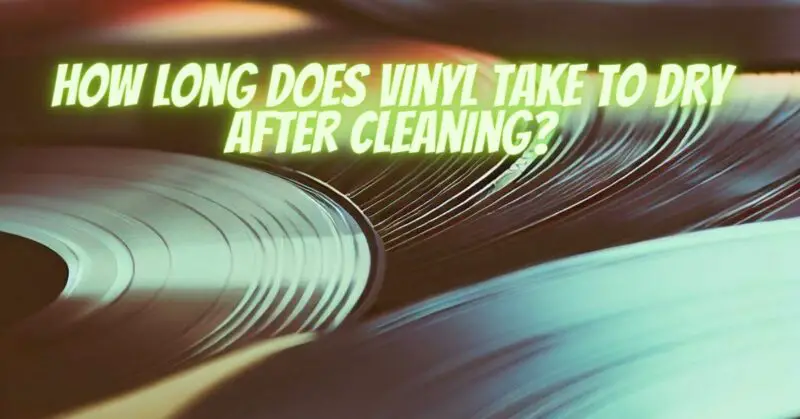Vinyl records are cherished for their analog warmth and rich sound quality, but to maintain their pristine condition and ensure an enjoyable listening experience, regular cleaning is essential. After cleaning, one common question arises: how long does it take for vinyl records to dry properly? In this article, we’ll explore the vinyl record cleaning process, factors affecting drying times, and best practices for ensuring your records are ready for the turntable.
The Vinyl Record Cleaning Process:
Cleaning vinyl records is a crucial step in preserving their sound quality and preventing damage. The cleaning process typically involves the following steps:
- Dust and Debris Removal: Start by gently removing loose dust and debris from the record’s surface using a brush designed for vinyl records.
- Wet Cleaning: Apply a vinyl record cleaning solution to the record’s surface and use a soft, non-abrasive brush to scrub the grooves. This process effectively removes dirt and grime that has settled into the grooves.
- Rinsing: Rinse the record with distilled water to remove any residual cleaning solution.
- Drying: After rinsing, it’s crucial to allow the record to dry completely before playing it.
Factors Affecting Drying Times:
Several factors can influence the drying time of vinyl records:
- Humidity: The humidity level in your environment can significantly affect drying times. Lower humidity levels may result in faster drying, while higher humidity can prolong the process.
- Airflow: Adequate airflow around the drying record is essential. Placing the record in a well-ventilated area or using a fan can help speed up drying.
- Temperature: Warmer temperatures generally lead to faster drying times. However, avoid exposing vinyl records to extreme heat, as it can cause warping or damage.
- Record Thickness: Thicker records may take longer to dry than thinner ones due to the increased surface area.
- Rinsing Method: How thoroughly you rinse the record after cleaning can impact drying times. Ensure that all cleaning solution is removed during rinsing.
Best Practices for Drying Vinyl Records:
To ensure your vinyl records are adequately dried and ready for playback, consider the following best practices:
- Use a Clean and Lint-Free Surface: Place the record on a clean and lint-free surface, such as a microfiber towel, to avoid introducing additional contaminants.
- Allow Sufficient Drying Time: Patience is key. It’s best to allow records to air dry naturally, ensuring they are completely free of moisture before storage or playback. This can take anywhere from a few hours to a full day, depending on the factors mentioned above.
- Avoid Direct Sunlight: Do not expose records to direct sunlight or extreme heat during the drying process, as this can damage the vinyl.
- Handle with Care: When moving the record during the drying process, handle it by the edges to prevent fingerprints or smudges.
Properly cleaning and drying vinyl records is an essential part of maintaining their sound quality and longevity. While drying times can vary based on environmental factors, ensuring adequate airflow, a clean surface, and patience in the process are key to successful record cleaning. By following best practices, you can enjoy your vinyl collection with confidence, knowing that your records are in their best possible condition.


